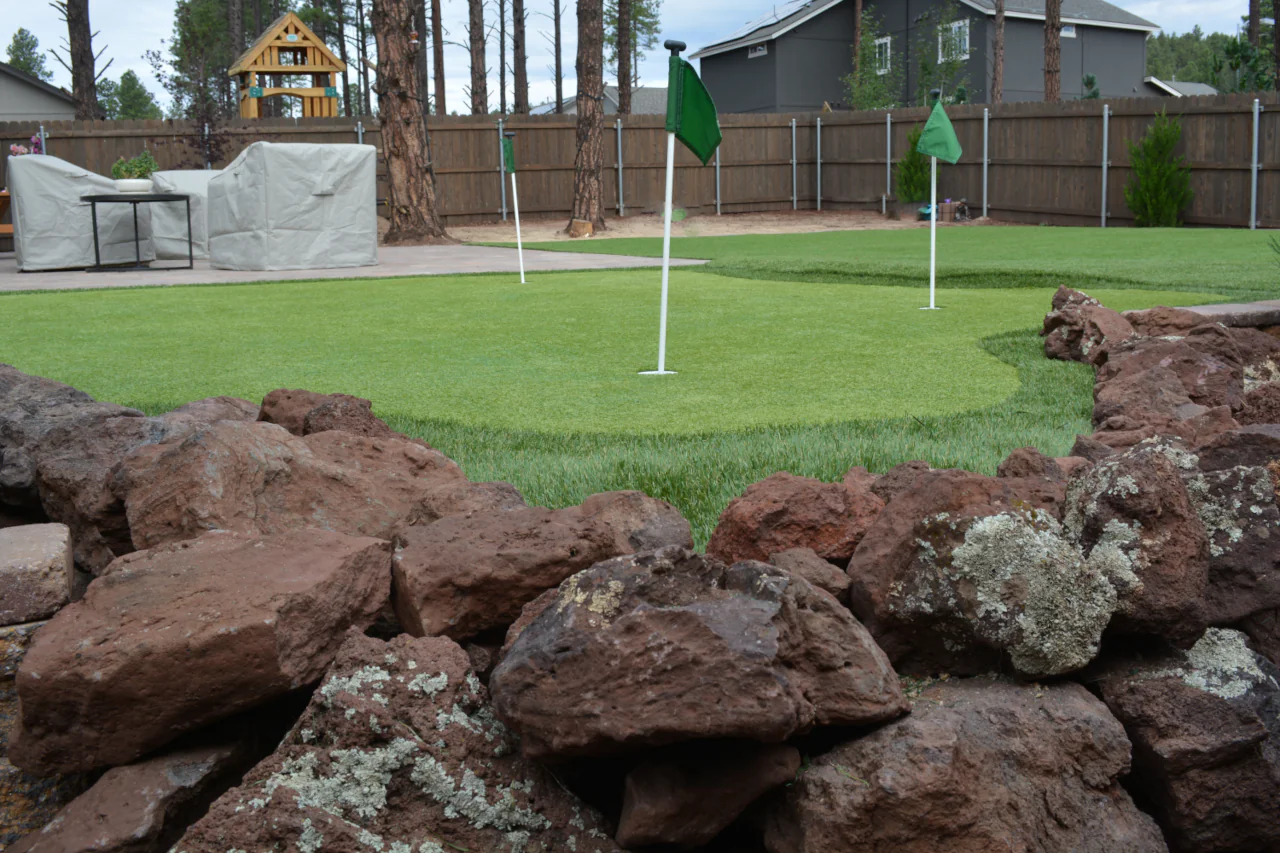How to Design a Three-Hole Practice Green

A three-hole practice green gives you a simple, enjoyable way to sharpen your short game without taking over the entire yard. This guide covers a well-designed layout, simple pin placement ideas, which synthetic turf types work best for a backyard putting green setup, and quick, repeatable drills. Sprinkle in a bit of imagination and a consistent practice routine, and you’ll be sinking more reliable putts in no time.
SIZE, SHAPE, AND HOW IT FITS THE YARD
Start by mapping a flat or gently sloped area that doesn’t conflict with walkways or landscaping. A typical three-hole green can require 300–700 square feet, depending on how much hole-to-hole distance you prefer. Think of three zones that create varied approach angles: a straightforward short putt, a mid-length shot across a subtle slope, and a long putt with noticeable break.
If you choose a full synthetic grass installation, pick a spot with strong sun and consider how the runoff will drain there. Proper base preparation keeps the surface consistent and helps the turf perform like a real putting surface. If you’re short on space, offset the holes so each one feels unique without needing much additional artificial grass.
LAYOUT TIPS THAT MAKE PRACTICE WORTHWHILE
Vary distances: aim for one short (6–10 ft.), one mid-range hole (12–18 ft.), and one extended putt (20–35 ft.). That range requires different putting speeds and concentration.
Use subtle contours: small bumps or gentle hollows add challenge without requiring major grading.
Create approach area options: include a small chipping area beside one hole so you can practice pitch-and-putt shots.
Edge details: a low-profile roll-up edge or bunker accent adds style and gameplay challenges.
Throughout the layout process, note your installation goals — whether you want a full synthetic turf base or a hybrid renovation — because different turf products perform differently depending on prep work.
PIN PLACEMENT THAT KEEPS PRACTICE FRESH
Move your pin locations each session. Move pins around the green edges and center to create different break patterns. A simple system: ABC pin rotation where A = front-third, B = middle, C = back. For extra challenge, place a temporary pin on the outer edge of a slight slope to train reads and speed control.
Use removable cups or portable pin kits so you can change locations without damaging the turf. Changing pins on synthetic turf putting greens is simple and lets you simulate tournament diversity in a Austin backyard setting.
SHORT PRACTICE ROUTINES FOR BUSY LIVES
No need for hour-long sessions. Try three quick drills that fit the three-hole layout:
Speed Ladder (6–12 minutes): Start at the short hole and putt three balls from each spot—short, mid, long—focusing on a steady stroke length for each distance.
Break Read Drill (8–12 minutes): From a set position, putt to each of the three holes with the pin in a different location. Work on reading the slope and controlling speed.
Pressure Finish (5–8 minutes): Make two-putt cycles around the three holes. If you finish all three in two putts, reward yourself with a harder approach next round.
Short routines like these keep your improvement consistent and make practice easy to maintain. Mix them over several days for well-rounded improvement.
